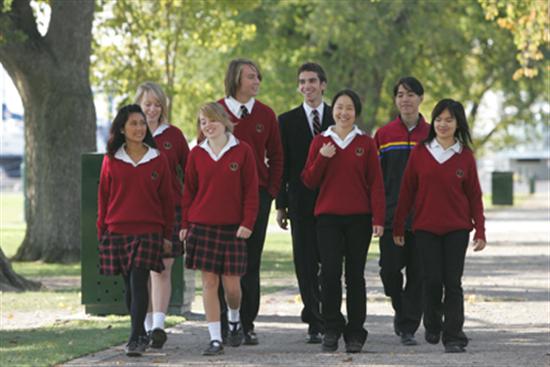- Study in AustraliaAustralian Universities/CollegesPrograms by faculty AusAustralian VisasLife in Australia
- Study In New ZealandNew Zealand UniversitiesPrograms by Faculty NZNew Zealand VisasLife in New Zealand
- Study in CanadaUniversities/Colleges in CANADAPrograms by faculty CanadaCanadian VisasLife in Canada
Types of Schools
Types of Schools in New Zealand
While most students in New Zealand attend state-funded schools, there’s a range of school types to choose from. Most schools teach in the English language, but some schools teach in Māori. Most state schools are secular (non-religious).
Here are the main types of schools available in NZ.
- An area school accepts students from years 1 to 13. Area schools are often located in rural areas.
- A composite school (like an area school) provides both primary and secondary education, but depending on its classification may not provide the full range of year levels to year 13.
- At a bilingual school teachers and children teach and learn in both English and another language for up to 20-hours a week (most often English and Māori).
- The Correspondence School provides distance learning for students who live a long way from their nearest school. Students may also study with The Correspondence School if they have a medical condition, have special education needs, or meet the gifted and talented criteria for enrolment.
- Designated character school is a state school that teaches the New Zealand Curriculum but has developed their own sets of aims, purposes and objectives to reflect their own particular values. For example religious beliefs or culture.
- Independent (or private) schools charge fees, but also receive some funding from the government. They are governed by their own independent boards and must meet certain standards to be registered with the Ministry of Education. They don’t have to follow the New Zealand Curriculum but must follow a learning programme of at least the same quality.
- Intermediate schools provide education for year 7 and 8 students.
- Te kura kaupapa Māori are state schools where the teaching is in te reo Māori and is based on Māori culture and values. These schools follow the curriculum for Māori-medium teaching, learning and assessment, Te Marautanga o Aotearoa.
A key goal of kura kaupapa is to produce students who are equally skilled in communicating in both Māori and English. Kura kaupapa generally provide education for students from years 1 to 8 or years 1 to 13.
Wharekura are schools that cater for students above year 8. Some wharekura cater for years 1 to 10, some are years 1 to 13 and some are years 9 to 13. - Middle schools accept students from years 7-10.
- Primary schools generally cater for students aged between 0-8 (full primary) although some only go up to year 6 (contributing schools).
- Regional health schools are for students with significant health difficulties who can’t attend their local school because they are in hospital, recovering at home, or gradually returning to school. Teachers work with students both in hospital and at home.
New Zealand’s three regional health schools jointly cover the whole country and are based out of Auckland, Wellington and Christchurch. More information about regional health schools, including entry criteria, is available from the Ministry of Education.

- Secondary schools. Although most secondary schools accept students from year 9-13, some cater for years 7-13.
- State schools. Most New Zealand schools are state schools which receive government funding. State schools can be primary, intermediate, middle, secondary or area/composite. Generally they accept both boys and girls at primary and intermediate levels (years 0-8), although some secondary schools offer single-sex education. Lessons are based on the New Zealand Curriculum.
- State-integrated schools used to be private and have now become part of the state system. They teach the New Zealand Curriculum but keep their own special character (usually a philosophical or religious belief) as part of their school programme. State-integrated schools receive the same government funding for each student as other state schools but their buildings and land are privately owned, so they usually charge compulsory fees called “attendance dues” to meet property costs.
- Special schools provide education for children with particular needs, arising from special talents, learning or behavioural issues. They use the New Zealand Curriculum.
- Teen parent units are attached to some secondary schools and cater for students who are pregnant or raising a child and who cannot practically attend a mainstream school.
For more information, please contact one of our offices
Study in Australia | Study in the UK | Study in Malaysia | Study in Canada | Study in the USA | Study in New Zealand













